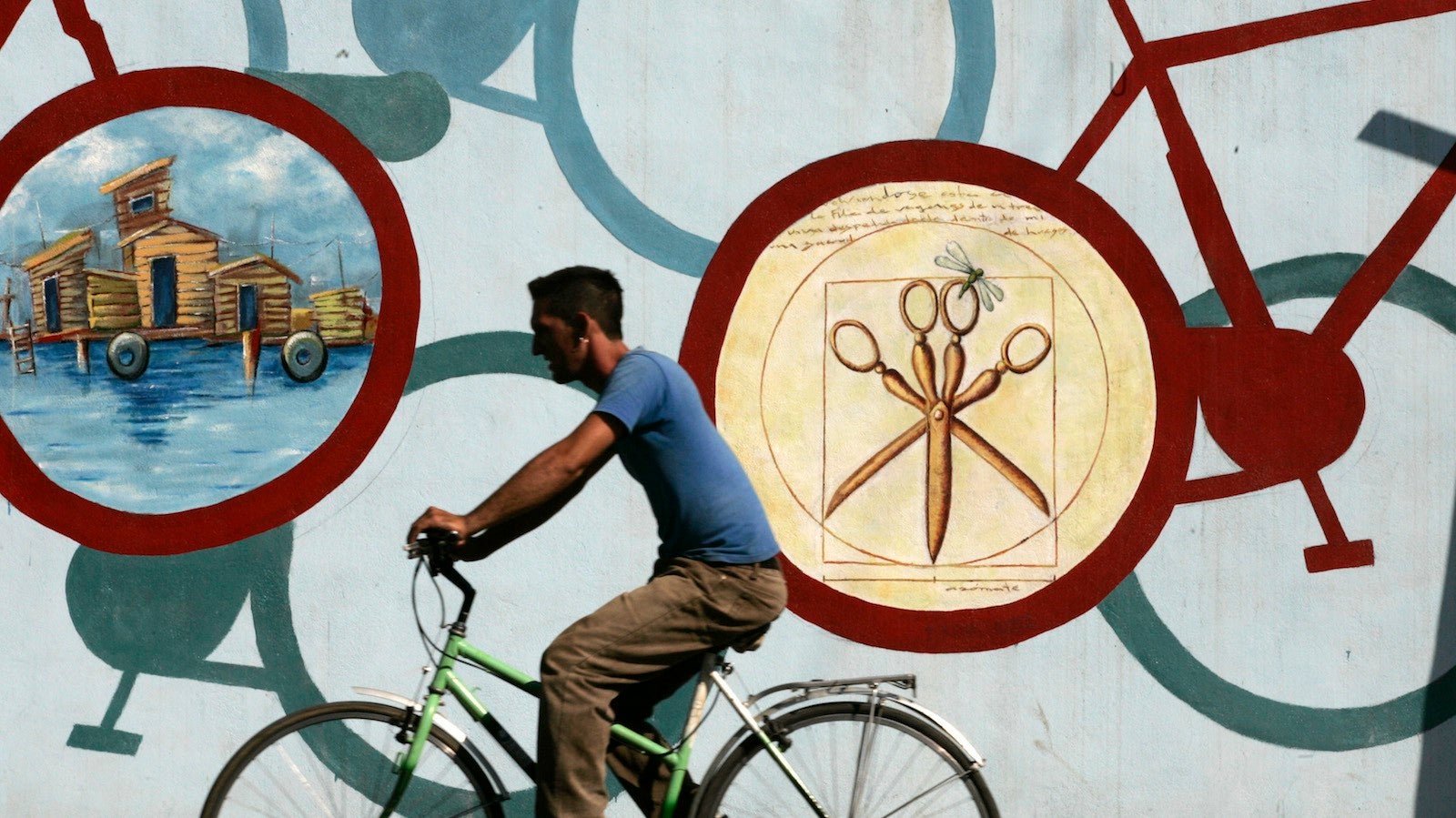Cuban art may be the next big thing on the art market
As the United States and Cuba move toward full diplomatic relations, will Cuban art become the next big thing in the art world?


As the United States and Cuba move toward full diplomatic relations, will Cuban art become the next big thing in the art world?
Or will Americans get ripped off as they travel to Cuba and buy paintings, prints, and sculpture that haven’t been properly curated or priced because all art in Cuba must be sold through government galleries?
The answer to that question may seem minor compared to issues like human rights or whether Cuba will allow US companies to modernize its telecommunications system, but it would be a highly visible signal of the nature of future US-Cuban relations.
Whether Cuba develops a real art market depends on whether the Cuban government agrees to allow privately owned galleries, so that the kind of evaluation and pricing that takes place in the rest of the world also can take place in Cuba, according to Ramón Cernuda, a prominent dealer of Cuban art in Florida.
“In the United States, access to information implies a free market,” Cernuda said in a recent interview. North Korea and Cuba are the only countries that still have only government-owned art galleries, he added.
So far, even though president Obama and Cuban president Raul Castro said at their meeting in Panama last weekend that they have made progress, the Cubans “haven’t changed a comma” in their business regulations to allow private galleries, Cernuda said.
Cernuda has a long and storied history in Cuban art. His gallery—Cernuda Arte, in Coral Gables, Florida—and his Cuban booth at fairs such as Art Wynwood in Miami in February, are possible only because he won a lawsuit against the US government in 1989, when the US Customs Service confiscated post-revolution Cuban art works in his possession. The government said he and others had violated the Trading With the Enemy Act.
US courts ruled in 1989 and 1990 that the George H.W. Bush administration’s ban on the importation of art from Cuba had violated a 1988 amendment to the Trading With the Enemy Act and the First Amendment guarantee of a free flow of information.
Those rulings forced the Treasury Department to license art dealers including Cernuda to bring Cuban works of art into the United States, although the works have had to travel through third countries to get here.
The rulings also made art the only thing that American travelers to Cuba have been able to bring home continuously without fear of confiscation. Even when the US government banned the import of Cuban rum and cigars, US travelers could still bring home art.
So far, the Cuban art market has been limited to avant-garde collectors and the relatively small number of US business travelers such as farmers, who have been able to travel to Cuba to promote their products since Congress allowed agricultural sales to Cuba in 2000.
There is no question that Cuban art is one of the great bargains in the art world today. Farmers, journalists, and other travelers to Cuba have bought paintings for as little as $150 and prints for under $100. Cernuda dismisses those works as “tourist art,” but said it is possible to buy “fine” works by “emerging or mid-career” Cuban artists priced between $5,000 and $15,000.
As the United States has eased travel restrictions, celebrities have begun traveling to Cuba to buy paintings at prices reported to be $45,000 and higher. Cuba’s 12th Havana Biennial opens May 22 and is expected to attract a record number of attendees, including prominent dealers.
The American interest in contemporary Cuban art is not surprising. American critics have had a high regard for Cuban art since 1944 when the Museum of Modern Art in New York held a breakthrough exhibition of Cuban painters. The museum also bought The Jungle, a painting by Wifredo Lam of slaves in the Colonial-era sugar fields that now is considered a masterpiece.
After the United States established the embargo on trade with Cuba and travel to the island in 1961, contact between the US and Cuban art communities stopped, but Cuban artists continued to work and gain prominence in Europe.
In the late 1980s, after the Soviet Union ended its support of Cuba and the country was desperate for foreign currency, the Cuban government began to encourage its artists to make international sales.
The result, Cernuda said, is that “Cuba has more artists per square foot than anywhere else in the world.”
Contemporary Cuban art ranges from traditional paintings of the countryside to starkly modern works that express discontent with Communist society. Foreign critics have praised artists such as Cernuda client Miguel Florido, who makes “wrinkled” paintings of the US flag. But figuring out which Cuban art works are likely to have lasting value is difficult without independent critics and sales records.
Travelers who buy art in Cuba’s government galleries “end up buying art that is not investment-grade,” Cernuda said. He encourages serious collectors to spend their time in Cuba studying art in the museums—and then make their purchases through his gallery or others in the US and Europe where the art has been evaluated.
Cuban officials may be reluctant to change business regulations until Congress lifts the embargo, but maybe they will realize that even at $50,000, a fine Cuban painting is priced low compared with many contemporary works by artists from other countries. It would seem to be in Cuba’s interest to establish a free market that would allow its artists to earn what their works are worth and pay taxes on the proceeds.
This post originally appeared at National Journal. More from our sister site:
Hillary Clinton is learning all the wrong lessons from Obama